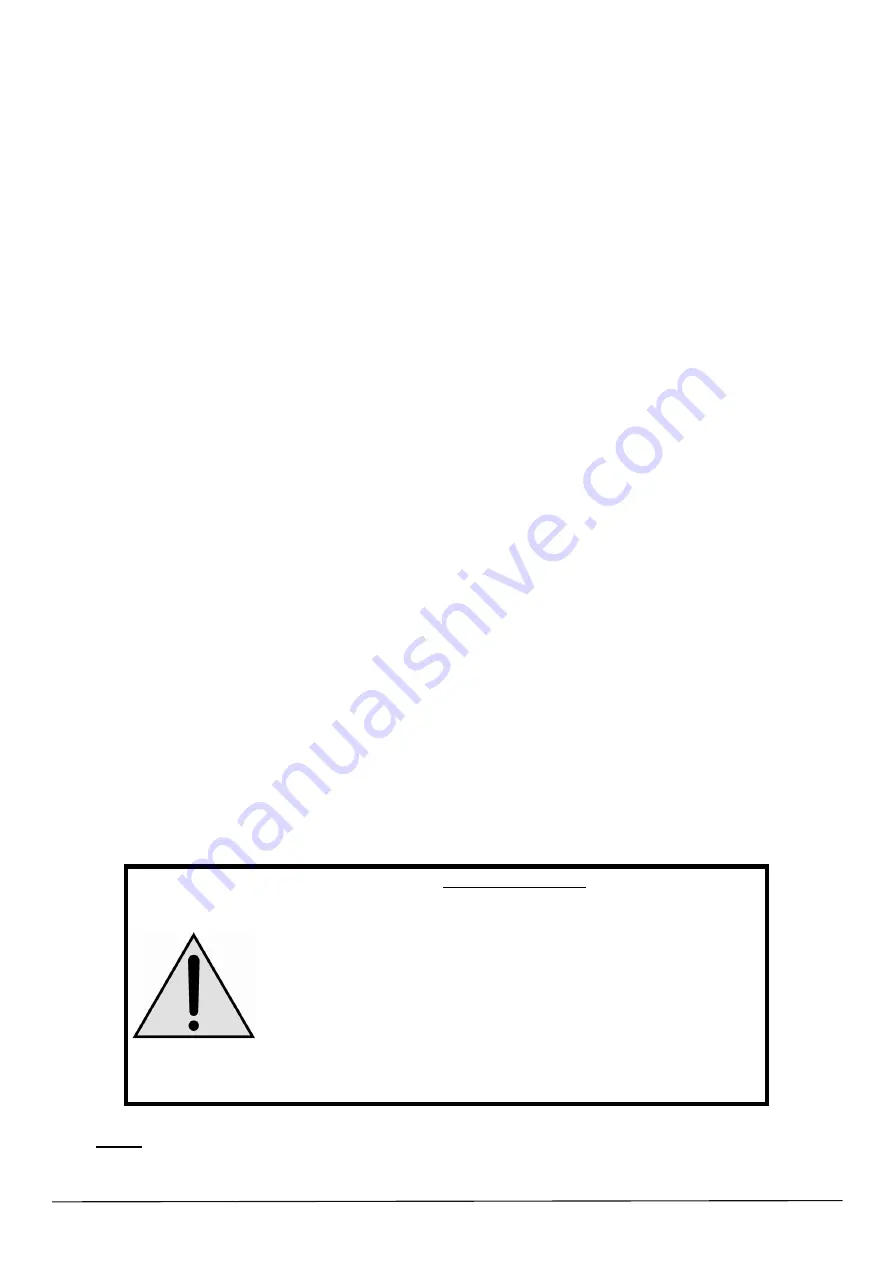
32
3.4.5 Trattamento dell’acqua di reintegro
The cooling is obtained from the evaporation of a certain quantity of the circulating water, in accordance with a
precise law of physics, and in a volume dependent upon the quantity of heat to be rejected.
The water which evaporates has no salt content, whereas in the cooling circuit the salts present increase in
concentration until they reach saturation point and start to deposit out of solution both on the inside of the
piping and on the fill pack/heat exchange surface, compromising the correct operation of the whole plant.
It is thus fundamental that, together with an adequate bleed-off, preferably controlled by an automatic system
for monitoring of the water hardness, a suitable treatment of the make-up water be effected, prior to its being
introduced into the cooling circuit through the float-valve.
The type of treatment is not susceptible to standardization nor applicable to every situation, but rather depends
strictly upon the nature of the water available for performing the make-up.
In order to optimise the technical choice on this basis, it is advisable to consult one of the many firms operative
in the “Water Treatment” sector, which will be capable of performing an on-site chemical analysis of the water
and to suggest the best type of treatment, eventually also offering a continuous after-sales service.
On an indicative basis, the general characteristics that should have make-up water for cooling circuits are listed
below:
NATURE:
physically clean, optically clear, absence of turbidity, without deposits, chemically neutral
HARDNESS:
carbonate max. 14°F (140 [mg / l] of CaCo
3
)
CONDUCTIBILITY
: electrical max. 600 [
μ
s (Microsiemens) / cm]
SPECIFIC VALUES:
pH 0 = 7.8
Carbonate hardness 14° F
pH 0 = 8.1
Carbonate hardness 10° F
pH 0 = 8.3
Carbonate hardness 7° F
Free carbonic acid max 8
mg/l
Carbonate hardness 14° F
Free carbonic acid max 4
mg/l Carbonate hardness 10° F
Free carbonic acid max 3
mg/l
Carbonate hardness 7° F
Ammonia
not present
Iron
max
0.3
mg/l
Manganese
max
0.05
mg/l
Sulphate
max
250
mg/l
Chlorides
max
150
mg/l
KMn04
max
15
mg/l
SAFETY WARNING !
The bleed-off with or without an anti-scale or anti-corrosion chemical
treatment is not sufficient for control of biological pollutants. The growth of
algae, slime or other micro-organisms, if left uncontrolled, will reduce the
plant performance and may contribute to the growth of potentially harmful
micro-organisms in the hydraulic circuit. hence a treatment programme
with biocides, specifically designed for biological control, must be
implemented right from the first filling of the circuit with water and
systematically maintained in accordance with the instructions of a
competent specialist supplier.
NOTE
: Tower maintenance personnel are advised to adhere to the recommendations made in the EUROVENT
9-5 (2nd edition 2002) guidelines for the prevention of biological contamination in evaporative cooling
systems.
Содержание H51369
Страница 4: ...4 2 DESCRIZIONE DELLA MACCHINA Fig 02...
Страница 23: ...23 2 DESCRIPTION OF THE EQUIPMENT Fig 02...









































